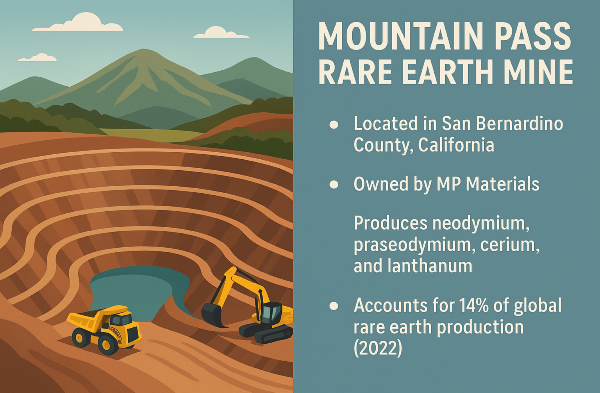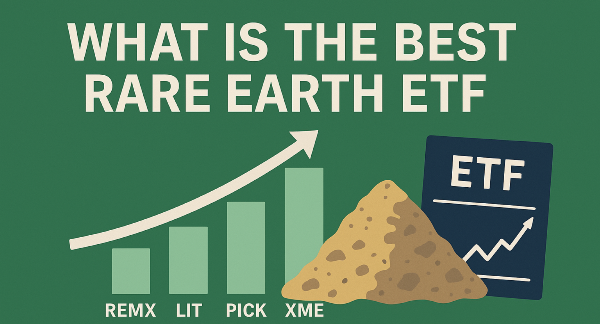Key Takeaways
A good dividend cover ratio is typically above 2, indicating that a company earns at least twice what it pays in dividends, suggesting strong financial health and payout sustainability. A higher ratio provides a cushion during economic downturns, making it a reliable indicator for long-term dividend investors.
Introduction
The dividend cover ratio is basically a financial litmus test telling investors whether a company’s dividends are rock-solid or teetering on the edge of disaster. It’s a simple concept: if a company's earnings comfortably cover its dividends, great! If not, well… you might want to rethink that “passive income” dream. A healthy ratio means lower risk of your dividends getting slashed without warning, and trust me, no one likes surprise cuts—especially not dividend investors who are banking on that sweet, sweet cash flow. So, if you want reliable income, learning how to sniff out a strong dividend cover ratio is essential.
Understanding the Dividend Cover Ratio
Definition & Formula
Look, the dividend cover ratio is just a fancy way of saying: “Hey, can this company actually afford to pay its dividends, or is it bluffing?” The formula is straightforward:
Dividend Cover Ratio = Earnings Per Share (EPS) / Dividend Per Share (DPS)
If this number is 2 or higher, we’re golden—it means the company’s earnings cover dividends twice over. Anything below 1, and we’ve got a major problem: the company is paying out more than it earns, which is basically financial wizardry destined to fail. Smart investors look at this ratio to separate the responsible dividend payers from the wannabes.
Interpretation of Dividend Cover Ratio
A healthy dividend cover ratio is generally 2 or higher, meaning the company isn’t scraping the bottom of the barrel to pay out dividends. But extremes can be warning signs, too.
- Low ratio (<1) = 🚨 Red alert! Dividends could be cut because earnings don’t even cover them.
- Sky-high ratio (>3-4) = Hmm… Is this company hoarding earnings instead of paying decent dividends? Investors might wonder if they’re being overly stingy.
And let’s not forget that different industries have different norms. Utility companies can afford lower ratios because they have steady income, while tech firms are usually reinvesting in growth rather than paying hefty dividends. Knowing the industry context is crucial for judging whether a company’s ratio is actually good or just pretending to be.
What Is a Good Dividend Cover Ratio?
Industry Standards & General Guidelines
A good dividend cover ratio usually sits around 2 or higher, ensuring a company isn’t flirting with dividend disaster. But this depends on the industry:
- Utility & Consumer Staples → Lower cover ratios are fine, thanks to stable cash flow.
- Tech & Growth Companies → Higher cover ratios because they reinvest earnings instead of splurging on dividends.
Economic shifts can also mess with these numbers. When times get tough, companies with a strong ratio are better positioned to keep dividends flowing, while weaker ones might start slashing payouts faster than a failing startup burns through cash.
Factors Influencing Dividend Cover Ratio
Why does a company’s dividend cover ratio change? Plenty of reasons:
- Earnings Stability → If profits are consistent, the ratio holds steady. If earnings are a rollercoaster, dividends might be in danger.
- Dividend Policy → Some firms prioritize reinvesting, while others aim to keep income investors happy.
- Debt Levels → If a company is drowning in debt, dividend payouts could take a backseat.
Understanding these factors helps investors pick stocks with strong long-term dividend security instead of betting on companies that look good today but might tank tomorrow.
How to Use Dividend Cover Ratio in Investment Strategy
Evaluating Stocks for Dividend Safety
Dividend investors live and die by financial stability. Comparing dividend cover ratios across companies in the same industry helps weed out solid performers from those barely scraping by. The best approach?
- Look at historical trends → Is the ratio stable over time, or dropping dangerously?
- Check earnings reports → Consistency matters.
- Pair it with payout ratio & free cash flow → No single metric tells the full story.
Dividend Cover Ratio vs. Payout Ratio
The dividend cover ratio isn’t the only player here—there’s also the payout ratio:
- Dividend Cover Ratio → Focuses on how many times earnings can cover dividends.
- Payout Ratio → Shows what percentage of earnings actually goes to dividends.
A low payout ratio means potential for dividend growth, while an extremely high payout ratio can scream financial recklessness. Smart investors check both to get the full picture before committing.
Conclusion
So, what did we learn? The dividend cover ratio is your cheat code for spotting sustainable dividends. If it's 2 or higher, you're in the safe zone. If it's below 1, bail before it's too late. But don’t stop there—use it alongside payout ratio, free cash flow, and earnings stability to get a complete view of a company’s dividend strength. And where do you find this info? Company financial reports, investment research sites, and reliable stock screeners. Do the homework, and you won’t end up holding dividend stocks that drop their payouts just when you need them most.
🚀 Master Dividend Investing – Your Ultimate Guide 💰
Looking to supercharge your portfolio with dividend stocks? 📈 Check out these essential reads:
🏆 Top Dividend Stocks & Strategies
💰 Passive Income & Dividend Power Moves
🔍 How to Pick Winning Dividend Stocks
📊 Dividend Ratios & Metrics
⚡ Dividend Timing & Tax Strategies
🔗 Bookmark this guide & start your dividend wealth journey today! 🚀💸




























Key Takeaways
A good dividend cover ratio is typically above 2, indicating that a company earns at least twice what it pays in dividends, suggesting strong financial health and payout sustainability. A higher ratio provides a cushion during economic downturns, making it a reliable indicator for long-term dividend investors.
Introduction
The dividend cover ratio is basically a financial litmus test telling investors whether a company’s dividends are rock-solid or teetering on the edge of disaster. It’s a simple concept: if a company's earnings comfortably cover its dividends, great! If not, well… you might want to rethink that “passive income” dream. A healthy ratio means lower risk of your dividends getting slashed without warning, and trust me, no one likes surprise cuts—especially not dividend investors who are banking on that sweet, sweet cash flow. So, if you want reliable income, learning how to sniff out a strong dividend cover ratio is essential.
Understanding the Dividend Cover Ratio
Definition & Formula
Look, the dividend cover ratio is just a fancy way of saying: “Hey, can this company actually afford to pay its dividends, or is it bluffing?” The formula is straightforward:
Dividend Cover Ratio = Earnings Per Share (EPS) / Dividend Per Share (DPS)
If this number is 2 or higher, we’re golden—it means the company’s earnings cover dividends twice over. Anything below 1, and we’ve got a major problem: the company is paying out more than it earns, which is basically financial wizardry destined to fail. Smart investors look at this ratio to separate the responsible dividend payers from the wannabes.
Interpretation of Dividend Cover Ratio
A healthy dividend cover ratio is generally 2 or higher, meaning the company isn’t scraping the bottom of the barrel to pay out dividends. But extremes can be warning signs, too.
And let’s not forget that different industries have different norms. Utility companies can afford lower ratios because they have steady income, while tech firms are usually reinvesting in growth rather than paying hefty dividends. Knowing the industry context is crucial for judging whether a company’s ratio is actually good or just pretending to be.
What Is a Good Dividend Cover Ratio?
Industry Standards & General Guidelines
A good dividend cover ratio usually sits around 2 or higher, ensuring a company isn’t flirting with dividend disaster. But this depends on the industry:
Economic shifts can also mess with these numbers. When times get tough, companies with a strong ratio are better positioned to keep dividends flowing, while weaker ones might start slashing payouts faster than a failing startup burns through cash.
Factors Influencing Dividend Cover Ratio
Why does a company’s dividend cover ratio change? Plenty of reasons:
How to Use Dividend Cover Ratio in Investment Strategy
Evaluating Stocks for Dividend Safety
Dividend investors live and die by financial stability. Comparing dividend cover ratios across companies in the same industry helps weed out solid performers from those barely scraping by. The best approach?
Dividend Cover Ratio vs. Payout Ratio
The dividend cover ratio isn’t the only player here—there’s also the payout ratio:
A low payout ratio means potential for dividend growth, while an extremely high payout ratio can scream financial recklessness. Smart investors check both to get the full picture before committing.
Conclusion
So, what did we learn? The dividend cover ratio is your cheat code for spotting sustainable dividends. If it's 2 or higher, you're in the safe zone. If it's below 1, bail before it's too late. But don’t stop there—use it alongside payout ratio, free cash flow, and earnings stability to get a complete view of a company’s dividend strength. And where do you find this info? Company financial reports, investment research sites, and reliable stock screeners. Do the homework, and you won’t end up holding dividend stocks that drop their payouts just when you need them most.
🚀 Master Dividend Investing – Your Ultimate Guide 💰
Looking to supercharge your portfolio with dividend stocks? 📈 Check out these essential reads:
🏆 Top Dividend Stocks & Strategies
💰 Passive Income & Dividend Power Moves
🔍 How to Pick Winning Dividend Stocks
📊 Dividend Ratios & Metrics
⚡ Dividend Timing & Tax Strategies
🔗 Bookmark this guide & start your dividend wealth journey today! 🚀💸